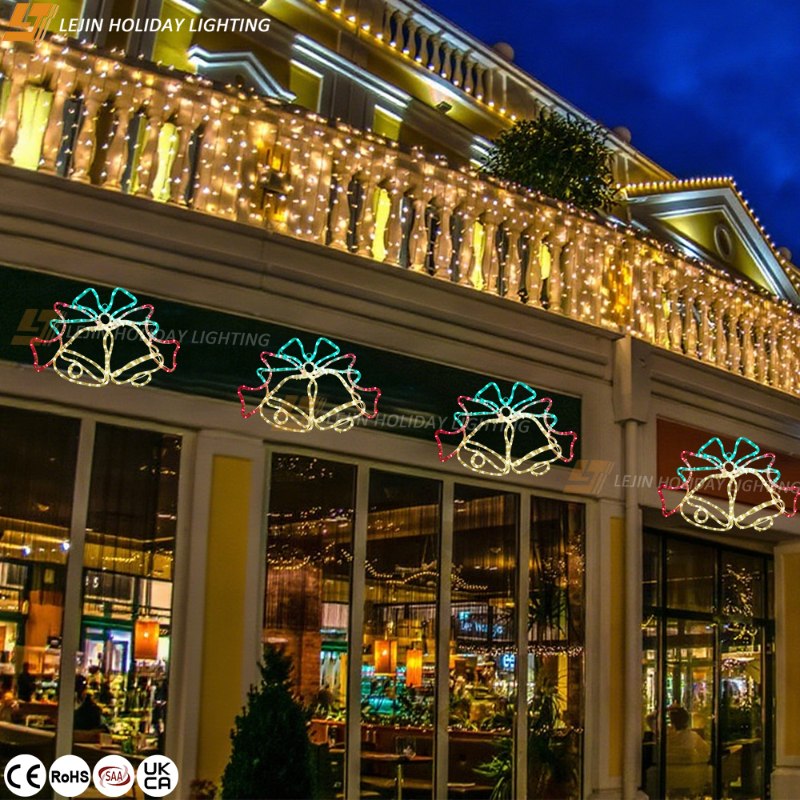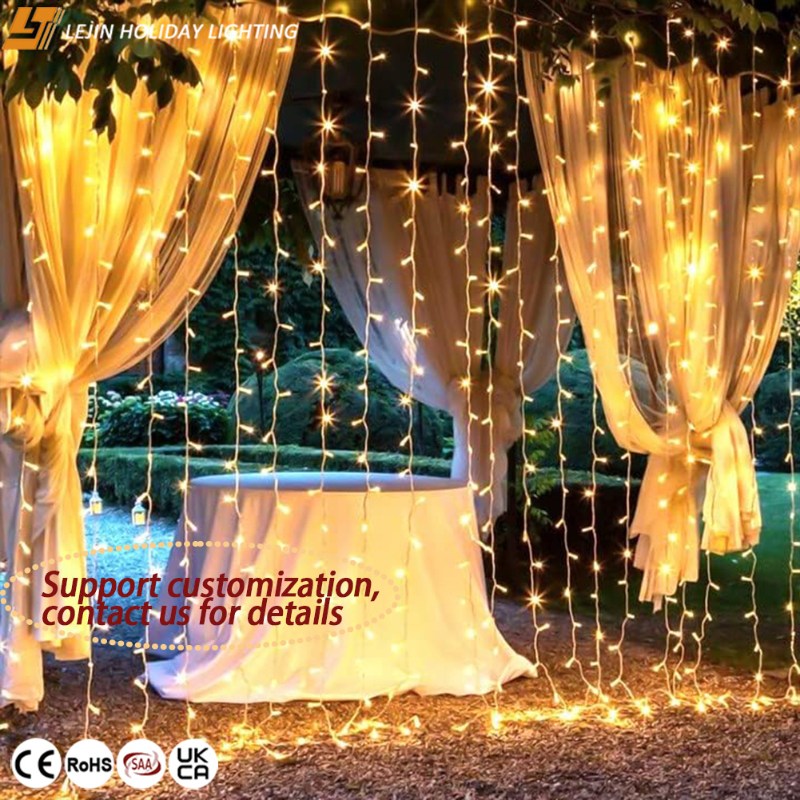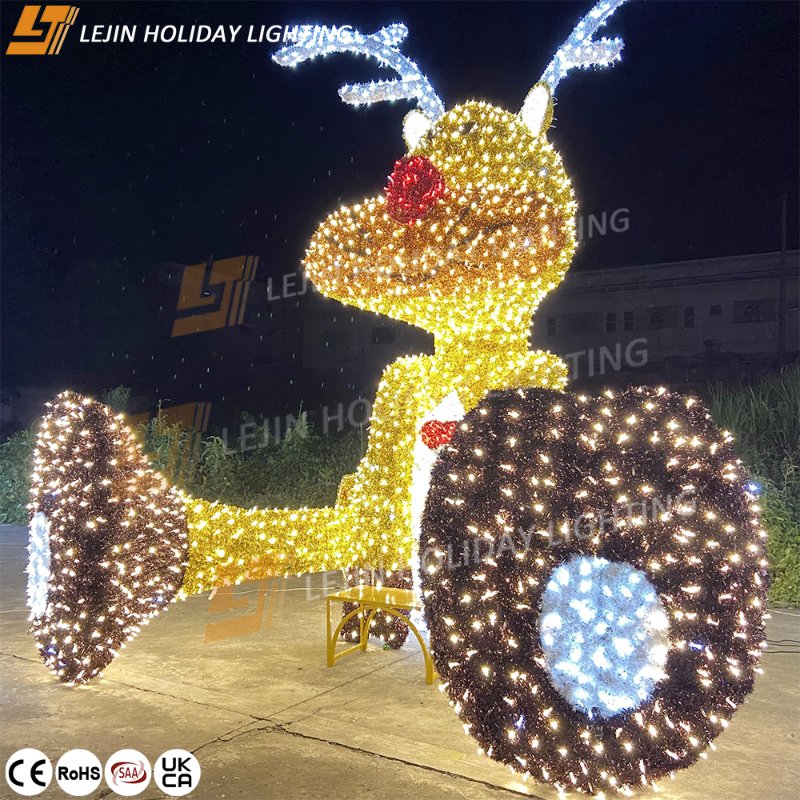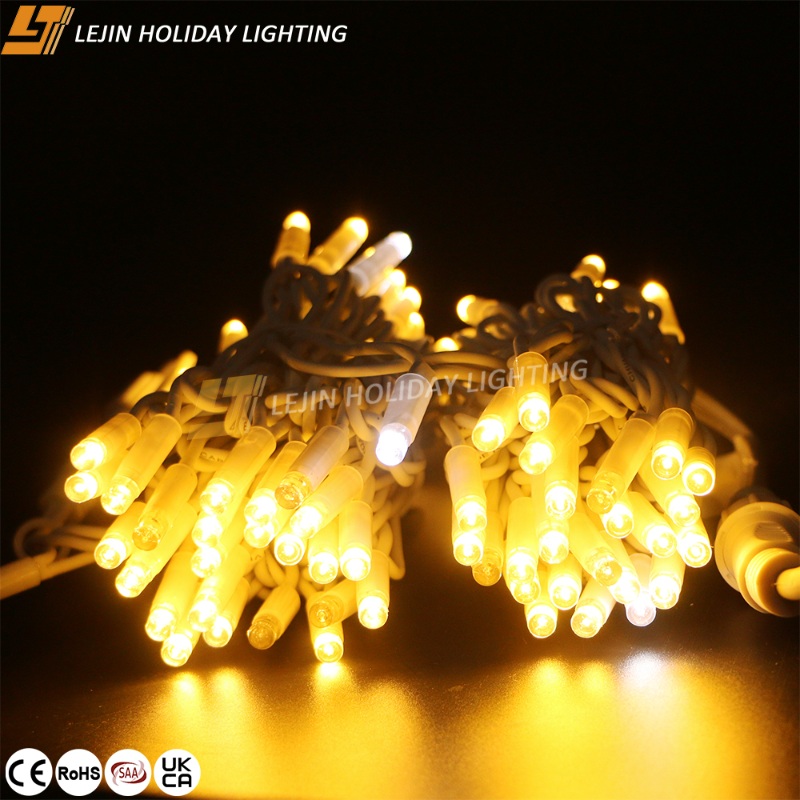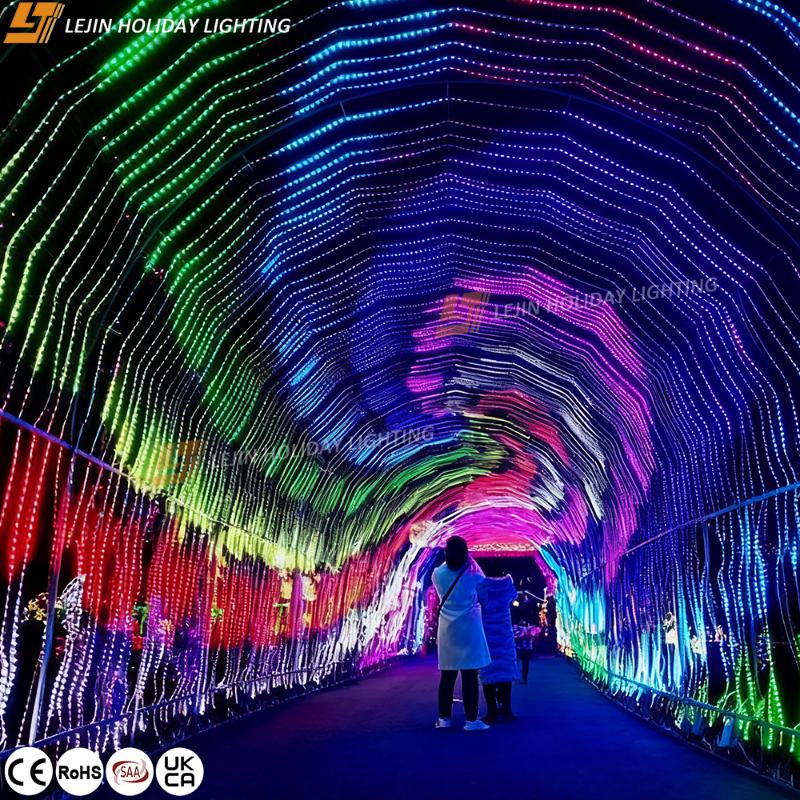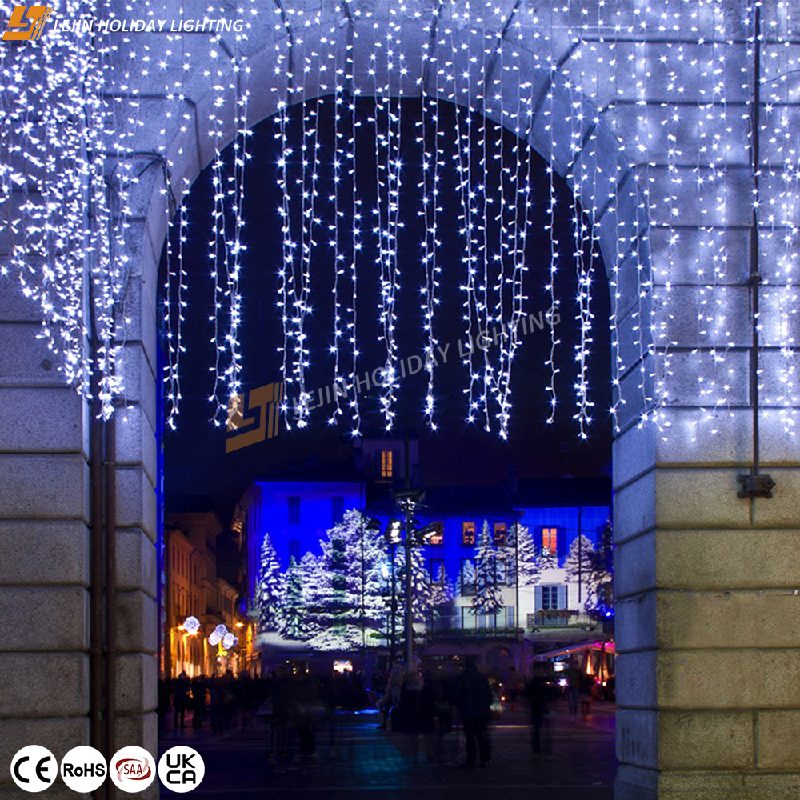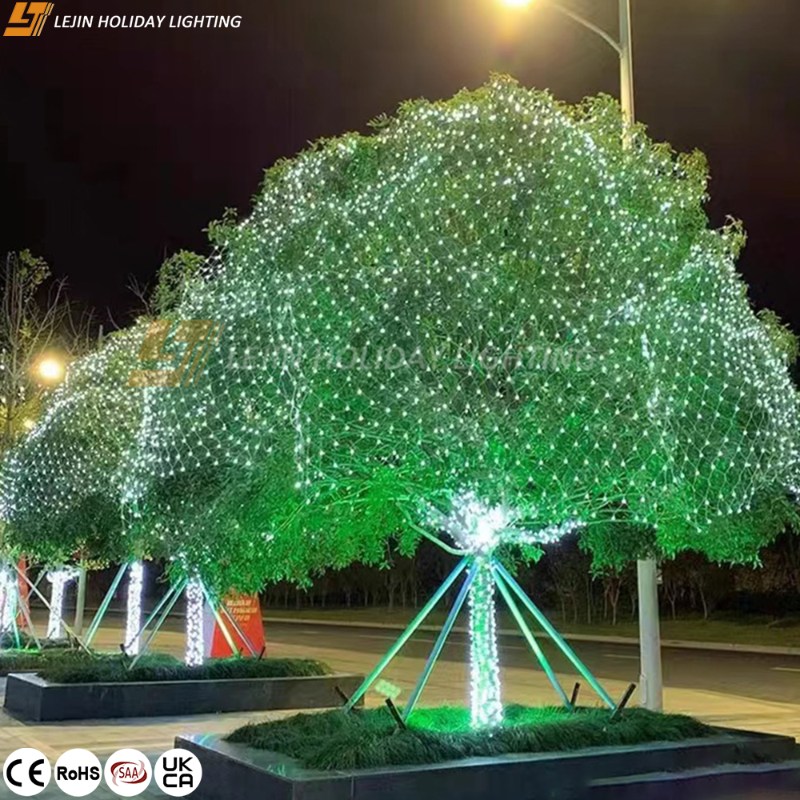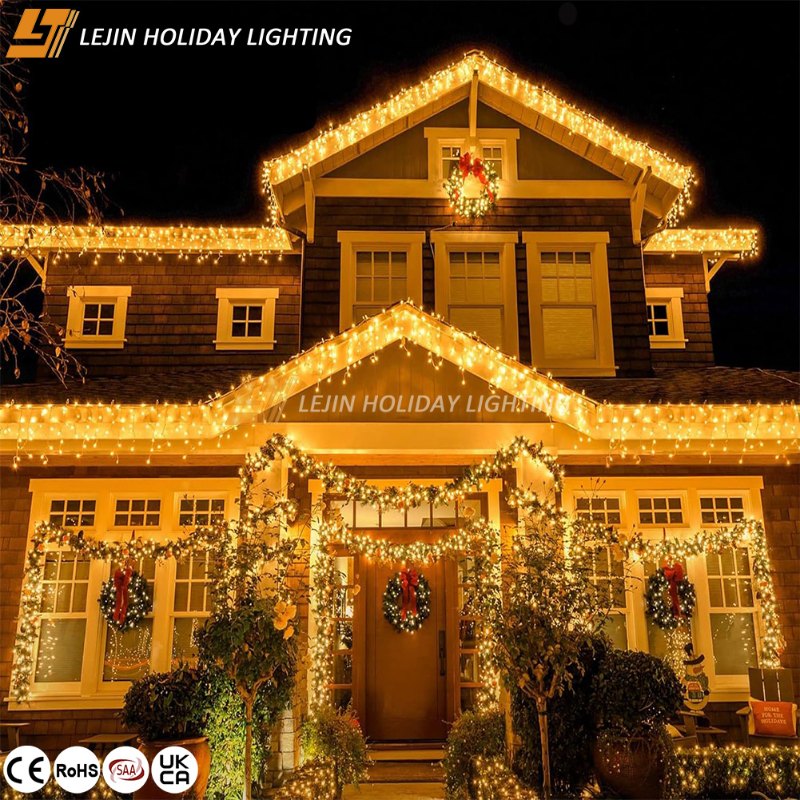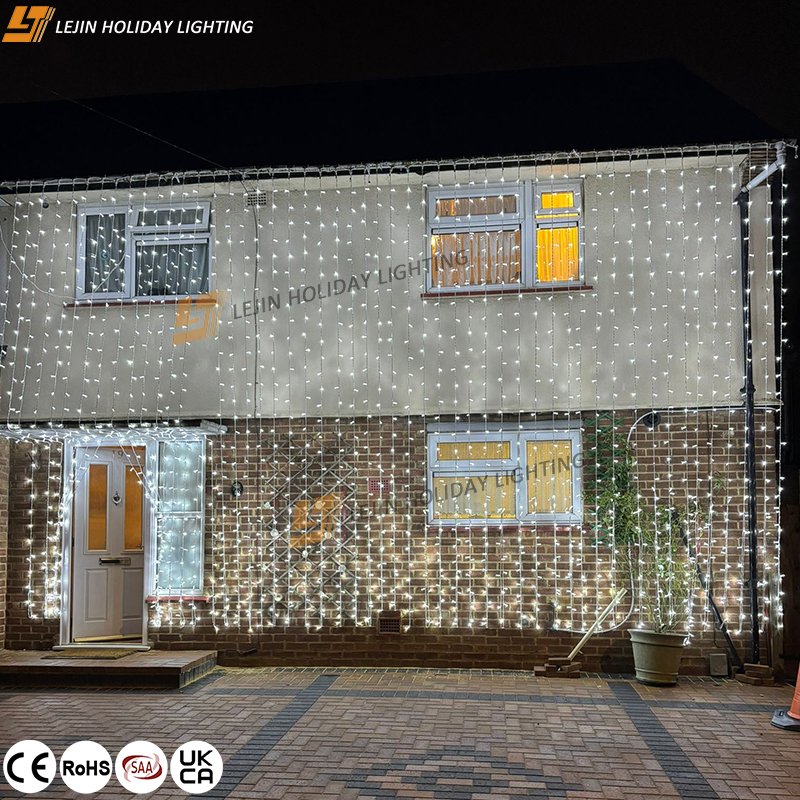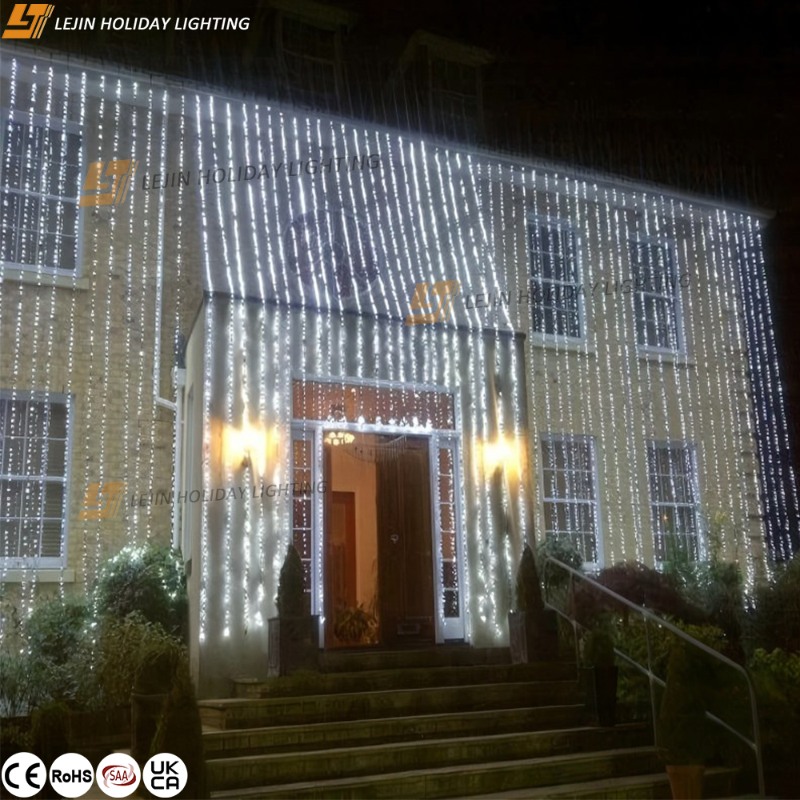How to Balance Visual Effects and Energy Efficiency for Commercial Lighting LED Curtain Lights?
Oct 27, 2025
In commercial scenarios such as shopping mall windows, building facades, and pedestrian street corridors, LED curtain lights have become the "visual highlight" for illuminating spaces, thanks to their soft light effects and flexible shapes. However, commercial spaces require long hours of lighting, which often leads to a dilemma: "pursuing better effects means higher energy consumption, while saving energy results in dull lighting." In fact, you don’t have to choose one over the other. By planning key links such as light sources, control systems, and installation properly, you can make curtain lights both bright and energy-efficient.
Choose the Right Light Source: Use the Correct Lights for Less Energy and Better Effects.
The light source is the foundation for balancing visual effects and energy efficiency. There’s no need to get stuck on complicated parameters—just go for LED light sources. Compared with traditional lights, LED outdoor curtain lights can achieve the desired brightness without high power consumption. They also have a long service life, reducing the trouble of frequent bulb replacements and cutting energy consumption from the source.
Select lights based on specific scenarios: For shopping mall windows, prioritize LED lights that can restore the true colors of products, making clothes, accessories, and other items more attractive. For building exteriors, warm white or cool white light is ideal—it creates a warm or transparent atmosphere without wasting electricity. Avoid blindly pursuing high power; instead, use a combination of more lamp beads and lower power. This not only makes the light more uniform but also saves a significant amount of energy.
Smart Control: Let Brightness "Follow Demand".
Lighting needs in commercial spaces are not fixed—during the day, sufficient brightness is required to counter natural light; at night, when foot traffic decreases, excessive brightness becomes unnecessary. Smart outdoor curtain lights solve this problem by enabling "on-demand lighting" and avoiding energy waste.
There are two simple ways to achieve this: First, time-based adjustment. For example, set the brightness to maximum during mall business hours and lower it to a basic level after closing. This alone can reduce energy consumption by more than 50%. Second, sensor-based adjustment. In places like pedestrian streets, install motion sensors—when someone passes by, the lights brighten slightly; when no one is around, they stay in low-power mode. This ensures a good user experience while saving electricity. Additionally, smart control can create dynamic effects like fading and flowing, enriching the visual experience without extra energy consumption.
Scientific Installation: Don’t Let Light "Waste Away".
High energy consumption is often not caused by the lights themselves, but by improper installation—scattered light and dark areas force you to increase power to compensate for insufficient lighting. In fact, by optimizing the installation of waterproof commercial curtain lights and ensuring every beam of light is used effectively, you can save energy without reducing lighting quality. For example, when planning curtain light string spacing, there’s no need to calculate precise values—adjust based on installation height. For higher installations, widen the spacing; for lower ones, narrow it. This avoids overlapping light spots or dark areas. Adjusting the lighting angle is also crucial: direct the light toward the target surfaces (such as walls or windows) instead of letting it shine into the air or onto the ground. You can also add reflectors behind the light strings to concentrate scattered light, making the visual effect more focused while reducing energy consumption.
Durable Materials: Reduce "Hidden Energy Consumption".
Energy conservation isn’t just about saving electricity bills—reducing the hassle of later maintenance and replacements is also a form of "hidden energy conservation." If durable LED curtain lights are made of poor-quality materials, they are prone to damage and dimming. Frequent replacements not only cost money but also disrupt commercial operations, indirectly increasing costs.
Focus on two aspects when selecting lights: First, protective capabilities. For curtain lights used in outdoor or humid environments (such as near hotel swimming pools), choose products that are waterproof and dustproof. You don’t need to remember specific protection ratings—just opt for "outdoor-specific models" recommended by suppliers. Second, heat dissipation. Choose styles with breathable shells that facilitate heat dissipation. This prevents the lights from dimming easily, extends their service life, and reduces repeated investments. These details don’t directly save electricity, but they help control long-term project costs.
Conclusion: The Key to Balance Is "No Blind Choices".
For commercial lighting curtain lights, there’s no need to compromise between visual effects and energy efficiency. The core principle is "no blind selection and no blind installation." By choosing lights based on scenarios, adjusting controls according to needs, using scientific installation methods, and selecting durable materials, you can form a complete energy-saving solution.
If you’re unsure, you can also ask suppliers for customized solutions. They can design curtain light arrangements and light effect modes based on the characteristics of your commercial space, helping you avoid the trap of "high energy consumption with poor effects" from the start. In this way, christmas curtain lights can become the "highlight" of commercial spaces without becoming a "electricity bill burden."
Read More
